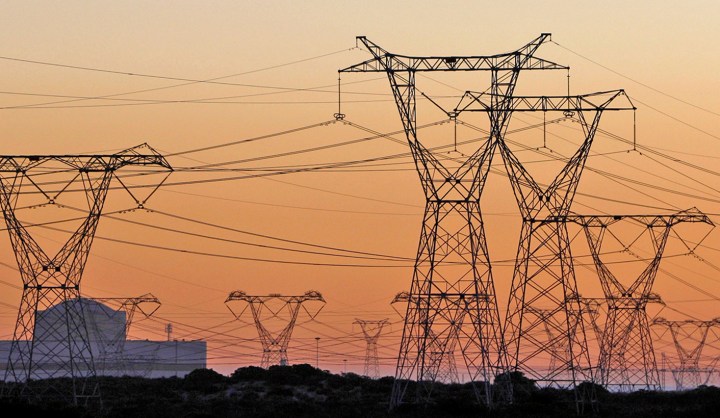South Africa
Power Struggles: The answers on Eskom debt – but not from Eskom

About a month ago, the following questions relating to Eskom debt were put to Eskom and its financial director, Anoj Singh, through the official channels of communication, namely Eskom Mediadesk and the Eskom spokesman. While Eskom is yet to answer, a financial sector analyst has. By CHRIS YELLAND.
Despite numerous re-sends and reminders, and even escalation of the questions to the spokesman of the Eskom board, no response (or even acknowledgement of receipt) was ever received.
It seemed that in the current public relations crisis, Eskom officials had abandoned any pretence of professionalism in handling media queries.
Then yesterday, after reading an excellent analysis of Eskom’s debt by Moneyweb’s Warren Thompson entitled “Government employees are propping up Eskom”, in exasperation I forwarded the questions to an overseas private sector financial analyst, who came back in an hour with the answers to the questions below:
What is the level (ZAR-billion) of Eskom’s current debt finance, and its projected debt finance requirements over say the next 5 to 10 years?
Most of this is not totally transparent, so here is my rough understanding of where things are at. Currently Eskom has around ZAR350bn of debt financing. Net debt is around ZAR320bn. Eskom is expected to borrow around ZAR50bn gross per year going forward.
Can you give a broad breakdown of the sources of Eskom’s current debt finance e.g. listed foreign capital market debt, listed local capital market debt, local commercial paper, foreign commercial paper, etc.
At end of the 2015/16 fiscal year, of Eskom’s ZAR322,7bn of debt, ZAR126,5bn was ZAR market bonds, ZAR83bn was DFI (development finance institution) funding, ZAR59bn was foreign exchange market debt, ZAR38bn was export credit and ZAR4,8bn was commercial paper, with the balance being “other”. However the share of DFI funding and export credit is expected to increase.
Can you give the amount or percentage of Eskom’s current debt finance held by the PIC (Public Investment Corporation)?
We can’t really tell on unlisted stuff and bilateral lending, but out of listed instruments, 43,98% is PIC and other government pension funds, including the Eskom pension fund. I would guess that it is a similar percentage for unlisted direct lending, especially as the private sector pulls back. I think people focused too much on Futuregrowth’s position last year. There has been a larger, quieter shift going on elsewhere too. Hence the recent failed auctions of Transnet debt.
Can you advise the amount of debt maturities coming up in the next say 3 to 5 years, and whether this presents any challenges to Eskom’s liquidity, especially in light of the SA and Eskom credit downgrades and the delays by NERSA in processing Eskom’s RCA applications?
A total of ZAR298bn of Eskom debt is listed on Bloomberg. Of this, some ZAR21,5bn matures by end 2020, and ZAR61,9bn by end 2022. Eskom will have to roll this over at much higher coupon and yield rates, given both its stand-alone and headline ratings. Despite all the scandals, I don’t think that Eskom will be blocked from the market, but it will have to pay up significantly if negative perceptions around its management can’t be changed. As such it may turn elsewhere. The current strategy of shifting to IFI funding (international financial institutions such as World Bank and IMF), DFI and BRICS funding, etc., may well have to continue as a result.
Fitch says the following for total debt maturities by year, as at end 2015/16 fiscal year:
Debt Maturities (ZAR-billion)
2017 16,354
2018 19,217
2019 38,227
2020 40,683
After 2020 212,105
Total debt 326,586
Editor’s note:
The above responses were duly forwarded to Eskom to provide comment on the circumstances of Eskom’s failure to respond to the questions, and/or to comment on, add to or correct any of the above information on Eskom debt, including the information given in the Moneyweb article. Again, no response or acknowledgement of receipt was received. DM
Chris Yelland, investigative editor, EE Publishers
Photo: Electricity pylons carry power from Cape Town’s Koeberg nuclear power plant. Photo: Mike Hutchings / Reuters


















 Become an Insider
Become an Insider